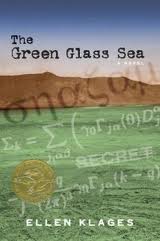Written
by Laurie Halse Anderson
Bibliographic
data
Anderson,
Laurie Halse. 1999. Speak. New York:
Puffin Books. ISBN 9780374371524
Plot
Summary
This
story is about Melinda Sordino, a freshman in Syracuse, New York. After going
through a traumatic event at a party, she calls the cops and becomes a social pariah.
This is her nine-grade year and the story of what she has to overcome to find
her own voice and help others.
Critical
Analysis
This
book is filled with despair, sadness, loneliness, and hurt. Even though the
mood of the novel is very depressing, it has a good and honest story. As
Melinda, the main character, strives to find the strength to overcome her
fears, the mood shows some inspiration and empowerment.
Laurie
Halse Anderson provides multiple themes, such as, the strength Melinda has to
find to overcome her experiences, the pressure of conforming to the rest, and
the difficulties of growing up. Everyone goes through having pressures to join
the crowd in high school.
Melinda
is a character that some young women can really relate and look up to. Young
women who have been through similar events will find comfort in knowing that
they are not alone in their feelings, fears, and hurt. Readers are also able to
relate to the relationships problems Melinda goes through with her past friends
and boys. Most young females go through different phases of friendship once
they transition in the high school.
Anderson
delivers the story in four marking periods. Each marking period Melinda gives
the readers her report card results except for the last one. Anderson simple
ends the story with the dialogue between Mr. Freeman and Melinda. As Mr.
Freeman gives Melinda her A+ he mentions that she has been through a lot. This
is where Melinda shows her trust in Mr. Freeman and her ability to finally breath
and speak out by saying, “Let me tell you about it.” It leaves you feeling proud
of how far Melinda has come.
Being
that rape is a sensitive subject, some readers may find themselves
uncomfortable reading this story. It is inspiration but the reality of the
situation may be too much for some.
Review
Excerpts
- SLJ Best Book of the Year
- Publishers Weekly Best Book of the Year
- Golden Kite Award winner
- Michael L. Printz Honor 2000
- New York Public Library Books for the Teen Age 1999
- “An uncannily funny book even as it plumbs the darkness, Speak will hold readers from first word to last.” Horn Book
- “In a stunning first novel, Anderson uses keen observations and vivid imagery to pull readers into the head of an isolated teenager.” Publisher’s Weekly
- “This is a compelling book, with sharp, crisp writing that draws readers in, engulfing them in the story.” School Library Journal
Connections
- Intended for young adult readers
- Have students discuss the “The first ten lies they tell you in high school.” See if they agree them, and if they would add anymore to the list.
- Show a male experience of being bullied by having students read Burn by Suzanne Phillips.






